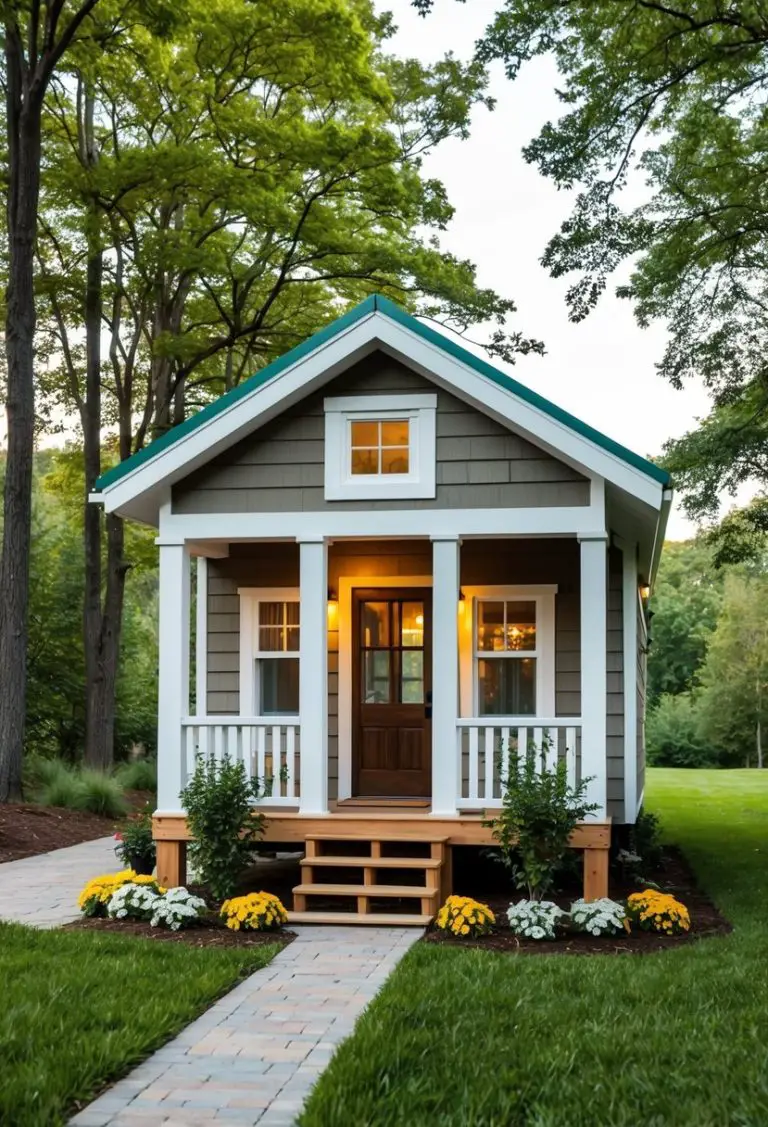Can a Tiny House Be Put on a Foundation: Exploring the Feasibility of a Permanent Tiny Home
Tiny houses have become increasingly popular in recent years due to their affordability, mobility, and eco-friendliness. However, many people wonder if it is possible to put a tiny house on a foundation. The answer is yes, a tiny house can be put on a foundation, and there are several options available.
One option is a permanent foundation, which is a popular choice for those who want to live in a tiny house long-term. A permanent foundation can be made of concrete, cinder blocks, or other materials, and it provides a stable and secure base for the tiny house. This type of foundation is also necessary if the tiny house needs to comply with local building codes and zoning regulations. Another option is a skid foundation, which is essentially a wooden platform that the tiny house is built on and can be moved if needed. This type of foundation is not as secure as a permanent foundation but can be a good option for those who want more flexibility in their living situation.
Types of Foundations for Tiny Houses
When it comes to building a tiny house, one of the most important decisions is choosing the right foundation. Depending on the soil composition, stability and durability, and other factors, different types of foundations can be used. Here are the four most common types of foundations for tiny houses:
Slab Foundation
A concrete slab foundation is a popular choice for tiny houses. It is a flat, concrete pad poured directly on the ground, which provides a stable and sturdy base for the house. The slab foundation is ideal for areas with a high water table or where the soil is prone to shifting. It is also an excellent choice for those who want to minimize the risk of pests and moisture issues. However, insulation is crucial in slab foundations as they can be prone to moisture buildup.
Crawlspace Foundation
A crawlspace foundation is similar to a slab foundation, but it has a small space between the ground and the floor of the tiny house. This space provides ventilation, easy access to utilities, and storage space. The crawlspace foundation is ideal for areas with a high water table or where the soil is prone to shifting. It is also an excellent choice for those who want to minimize the risk of pests and moisture issues. However, proper ventilation and pest control are crucial in crawlspace foundations.
Basement Foundation
A basement foundation is a mini basement that provides additional storage space and can be used as an extra living area. It is ideal for those who need extra storage space or want to maximize their living area. However, basement foundations require more excavation and are more expensive than other types of foundations. They are also more prone to moisture buildup and require proper insulation and ventilation.
Pier and Beam Foundation
A pier and beam foundation is a raised foundation that uses piers and beams to support the tiny house. It is ideal for areas with poor soil conditions or where the frost line is deep. The pier and beam foundation provides excellent ventilation, easy access to utilities, and can be adjusted to level the house. However, it requires more materials and labor to build than other types of foundations, and the piers can be prone to shifting if not installed correctly.
Overall, choosing the right foundation for a tiny house depends on various factors such as soil conditions, stability, and durability, and personal preferences. By considering all the options and their pros and cons, one can make an informed decision that ensures the longevity and safety of their tiny house.
Considerations for Placing a Tiny House on a Foundation
Building Codes and Regulations
Before placing a tiny house on a foundation, it is important to research and understand the building codes and regulations in the area. This includes both local and residential building codes, as well as zoning laws. Failure to comply with these regulations can result in fines, legal action, and even the removal of the tiny house.
Site Preparation and Construction
Proper site preparation is essential for placing a tiny house on a foundation. This includes ensuring the land is level and stable, and that the foundation is properly constructed to support the weight of the tiny house. Drainage is also an important consideration to prevent water damage and erosion.
Utilities and Maintenance
When placing a tiny house on a foundation, it is important to consider the availability and installation of utilities such as plumbing and electricity. Maintenance is also a key factor to ensure the longevity of the foundation and the tiny house itself.
Advantages and Challenges
Placing a tiny house on a foundation offers several advantages such as increased stability, permanency, and potentially lower costs compared to a tiny house on wheels. However, it also presents challenges such as limited mobility and potentially less flexibility in terms of relocation. Environmental factors such as weather conditions and landscaping should also be taken into consideration.
Overall, placing a tiny house on a foundation can be a viable option for those looking for a more permanent and stable living situation. However, it is important to carefully consider and research all relevant factors before making a decision.
Frequently Asked Questions
What are the different foundation options available for a tiny house?
There are several foundation options available for a tiny house, including slab-on-grade, pier and beam, and skid foundations. Each of these options has its own benefits and drawbacks, and the choice of foundation will depend on several factors, including the local building codes, soil conditions, and personal preferences.
How does the cost of building a tiny house on a foundation compare to other building methods?
Building a tiny house on a foundation can be more expensive than building a tiny house on wheels. However, the cost of building a tiny house on a foundation can vary depending on the type of foundation chosen, the size of the house, and the location. Generally, a slab foundation is the cheapest option, while a full basement can be the most expensive.
Can a tiny house on wheels be placed on a permanent foundation?
Yes, a tiny house on wheels can be placed on a permanent foundation. However, it is important to note that once a tiny house on wheels is placed on a foundation, it is no longer considered a mobile home and may be subject to different building codes and regulations.
What are the maximum dimensions for a tiny house built on a foundation?
The maximum dimensions for a tiny house built on a foundation will depend on the local building codes and regulations. In general, a tiny house built on a foundation can be up to 400 square feet in most areas.
What considerations are important when choosing a foundation for a tiny house?
When choosing a foundation for a tiny house, it is important to consider several factors, including the local building codes, soil conditions, and personal preferences. It is also important to choose a foundation that will provide adequate support for the weight of the house and protect against environmental factors such as moisture and pests.
Are there specialized builders who focus on tiny houses with permanent foundations?
Yes, there are builders who specialize in building tiny houses with permanent foundations. These builders have experience working with a variety of foundation types and can provide guidance on choosing the best foundation for a specific location and situation. It is important to research and choose a reputable builder who has experience building tiny houses with permanent foundations.










